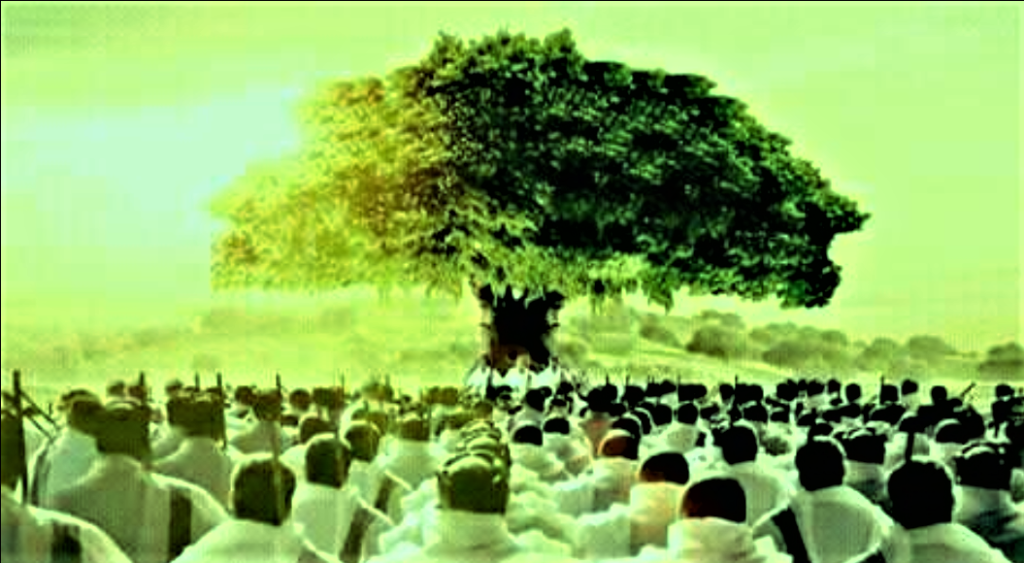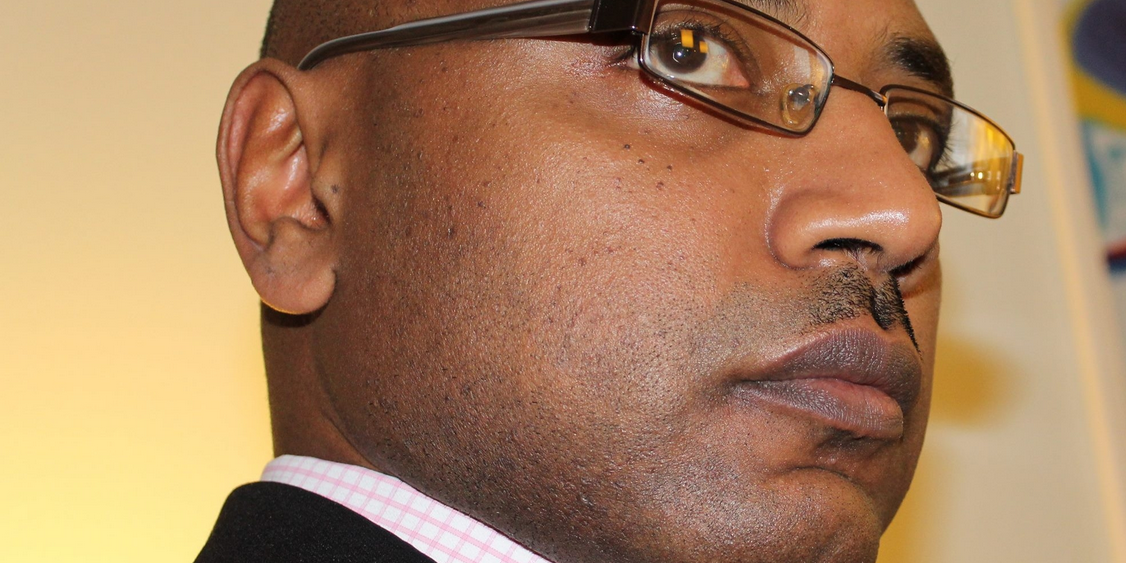The Oromo Gadaa System and its Accountability Values
Introduction
There are democratic institutions indigenous to Africa. Much is unknown about these institutions and Africa is often portrayed as undemocratic, a representation reinforced by a widespread democratic deficit on the continent. However, history reveals that this depiction of Africa – a universalized “undemocratic Africa” – is grossly misleading. There were, and still are, democratic institutions that are ruptured by repressive regimes. The Gadaa System is an exemplary indigenous democracy, recognized by the United Nations Educational, Scientific and Cultural Organization (UNESCO) as an “Intangible Cultural Heritage of Humanity” in 2016.[1]
In this world, where power relations are unjustly constructed and perpetuated through discursive mystification and epistemic violence, scholars must engage in demystification and counteractive epistemology. This essay provides a cursory glance into these questions: What is the Gadaa System? Why is it significant today? How does the institution promote accountability?
There are democratic institutions indigenous to Africa. Much is unknown about these institutions and Africa is often portrayed as undemocratic, a representation reinforced by a widespread democratic deficit on the continent. However, history reveals that this depiction of Africa – a universalized “undemocratic Africa” – is grossly misleading.
The meaning and significance of the Gadaa System
The Gadaa System is an indigenous democratic institution – also referred to as the “unwritten constitution” – of the Oromo people. The Oromo are the largest nation in Ethiopia and constitute about 40 percent of the country’s population, [2] as well as a significant population in the rest of Horn of Africa, mainly in northern Kenya. Although little is known about the time and mechanism of its emergence, it was operating as “a full-fledged system at the beginning of the sixteenth century” (Jalata 2012, 131). Asmarom Legesse, an African anthropologist of Eritrean origin, in his book entitled Oromo Democracy: An Indigenous African Political System (2000) states, “Oromo people created Gada[a], and Gada[a] created the Oromo nation” (Legesse 2000, 116, italics in original). [3]
Legesse argues that “[Gadaa] contains genuinely African solutions for some of the problems that democracies everywhere have had to face” (2000, 195). Gadaa has an inbuilt structure that facilitates checks and balances among different branches of government. It vests the ultimate authority of making and revising laws in the General Assembly called Gumii or Caffee (Figure 1), to which the executive branch, constituted of elected Gadaa leaders (abbootii gadaa) are accountable (Legesse 2000).
The term ‘Gadaa’ has three distinct but interrelated meanings:
- It designates an institution of governance, with a complex set of structures, rules, and regulations, i.e., the gadaa
- It refers to one of the gadaa grades during which a class of people assume political and ritual leadership.
- It is the period or era denoting the duration of time Gadaa leaders are expected to stay in power.
Of interest here is the first meaning of the Gadaa System, i.e., gadaa as an institution, which encompasses the other narrower meanings. The Gadaa System is composed of gadaa grades, although their number and names vary in different parts of Oromia. All Oromo males belong to one grade or the other, depending on his age, and are expected to undertake the commensurate societal responsibility. According to Legesse (2000), whose research is mainly based in Borana area, the grades include Dabballee (liminal childhood) of age 0-8, Gaammee Didiqqoo (Junior Gamme) of age 8-16, Gaammee Guguddoo (Senior Gamme) of age 16-24, Kuusa (Junior Warriors) of age 24-32, Raaba (Senior Warriors) of age 32-45[4], Gadaa (Rulers) of age 45-53, Yuuba 1-4 (partial retirement) of age 53-80, and Gadamoojjii (liminal elderly) of age 80 and above. Leggesse (2000) ends the Gadamoojjii grade at age 88 and adds another grade called Jaarsa (old) of age 88 and above.
Legesse goes on to define the Gadaa System as “a system of generation classes that succeed each other every eight years in assuming political, military, judicial, legislative and ritual responsibilities” (Legesse 2000, 104). This definition indicates the multi-faceted functions of the institution and its democratic nature of power transfer “every eight years.” The Gadaa System plays a key role in regulating the various dimensions of life, which could be broadly categorized as governing people-environment relations, as it sets normative standard for utilizing and caring for the natural environment. It serves the purpose of actively monitoring and resolving resource conflicts, and people-people relations, as it sets the rules and regulations for administrative, socio-political, and economic affairs.

Figure 1: Traditionally, the General Assembly (Gumii/Caffee) takes place under a sacred tree called Odaa.
Historically, the Gadaa System was central to the political, social, cultural, and economic life of the Oromo people. After their incorporation into the current territory of Ethiopia in the late 19th century, all practices related to the Gadaa System were banned and were no longer permitted to openly govern the people. This, of course, led to the decline in practical significance of the institution. However, it has remained a core symbol of identity and collective memory among the people. Despite external pressures, the Oromo people have maintained the cultural viability of the Gadaa System in some parts of Oromia, most notably in southern Ethiopia. Even when and where it was not practiced, it served as a potent source of inspiration and mobilization in the over-half a century of struggle for restorative justice, self-rule, and democracy.
Despite external pressures, the Oromo people have maintained the cultural viability of the Gadaa System in some parts of Oromia, most notably in southern Ethiopia. Even when and where it was not practiced, it served as a potent source of inspiration and mobilization in the over-half a century of struggle for restorative justice, self-rule, and democracy.
In a context of authoritarian political culture, which the Oromo and the other people of Ethiopia have experienced since their incorporation by expansionist Abyssinian forces led by Menelik II, the Gadaa System invokes, especially among the Oromo people, a memory of democratic heritage at its mention. This is captured by the people’s saying, “Dimokrasiin nuuf aadaadha malee haaraa miti,” meaning “democracy is not new for us; it is rather our culture.” This discursive counteraction is often used by the Oromo people in contexts where democracy is portrayed as new to the people and as a way of reclaiming one’s old civilization.
How does the Gadaa System promote accountability?
Current developments have inspired rethinking and debate around the possibility and implications of wider application of the Gadaa principles to modern polity. These debates often evoke the values and principles of the Gadaa System, including egalitarian principles; broad-based participation and intergenerational equity; age-sets based, structured way of training and preparation for leadership roles in the society; and accountability structures and functions, which are promoted through the non-hierarchical organization of the society.
Ethiopia has long been ruled by dictatorial regimes and the promises of democracy, peace, and development have remained unrealized. The unilateral decision of the ruling party to indefinitely postpone last year’s parliamentary elections, which were supposed to be held before the end of August 2020, citing COVID-19 as a reason, evoked the danger of possible perpetuation of dictatorship in the country. The elections were held in June 2021 in some regions – suspending in others – in a context of an all-out war in Tigray and low-intensity wars in many parts of the country, notably in Oromia and Benishangul-Gumuz. While there is no space to describe the process and the outcome of the elections here, it is worth noting that the ruling party excluded prominent political parties and figures, earning a reputation of sham elections, and marking an alarming milestone in a failed transition to democracy.
Therefore, the contemporary significance of the Gadaa System is rooted in these historical and contemporary realities. Beyond the people’s adoration for the system as their cultural emblem, the functional promise of the institution in a land plagued by consecutive authoritarian regimes, where peaceful transition of power has never been the case, cannot be overemphasized. One of the cross-cutting issues in the quest for peace, democracy and development is accountability. The Gadaa System has features that reflect its commitment to the notion and practice of accountability.
The most important accountability promise of the Gadaa System is embedded in its structural formation. The system is constituted of four institutions, responsible for different aspect of societal governance. These include the rulers (Gadaa), the warriors (Hariyyaa), the electors and the ritual leaders (Qaalluu), and the General Assembly (Gumii) (Legesse 2000).[5] Legesse (2000) states that Gumii “gives structural substance to the notion that power rests ultimately with the people – a right they exercise by direct participation or by delegating power to five groups of Gada[a] leaders” (p. 100). This reflects a notion of “checks and balances” in contemporary democracies.
In an organizational chart, Legesse (2000, 108) places Gumii at the top of the structure, with ultimate decision-making power, and juxtaposes Gadaa and Qaalluu at the same level but with different duties and responsibilities. The Abbaa Gadaa (the Gadaa Leader) cannot stay in power for more than eight years, and political power is transferred democratically and peacefully, through elections. While the office of Gadaa is held through elections and has a fixed term limit of eight years, that of the Qaalluu is hereditary and has no term limit. The two institutions signify the separation of political and ritual domains. Qaalluus are involved in elections for political office, but they cannot hold such an office. While the Gadaa leaders are engaged in making decisions (mura), the ritual leaders are engaged in ritual practices, such as blessings (eebba).
Of particular relevance to the notion of accountability is that the Gadaa System gives authority to the National Assembly (Gumii or Caffee). According to Legesse, Gumii “is made up of all the Gada[a] assemblies of the Oromo, who meet once every eight years, to review the laws, to proclaim new laws, to evaluate men in power, and to resolve major conflicts that could not be resolved at lower levels of their judicial organization” (2000, 100). The Gumii has the authority to remove Gadaa leaders from office if they are found to be unfit for leadership upon evaluation. This feature, which mirrors impeachment in modern-day democracy, is believed to check the tendency of power abuse and avoid the consequences of leadership incompetence.
Accountability, enacted through “confession” and “impeachment (buqqisuu),” is a key principle of the Gadaa System (Legesse 2000).
Accountability, enacted through “confession” and “impeachment (buqqisuu),” is a key principle of the Gadaa System (Legesse 2000). This principle requires that “the luba [the office of the Gadaa leaders] in power appears before the Gumii and let the people judge how well they have conducted themselves as leaders. If their leadership was inadequate, the National Assembly will remove them from office or penalize them in other ways, such as barring them and all their descendants from holding the same office” (2000, 202).
In Borana, the leaders in power are evaluated by the immediate younger and four of the older Gadaa classes. The evaluation takes around the middle of the term of power and may lead to buqqisuu (uprooting) and replacement with other leaders, other forms of punishment, or forgiveness following the confession and pledge of the leader(s) to make necessary amendments during the second half of the term. This is a well-established mechanism of ensuring accountability of elected leaders to the people and works in tandem with the other Gadaa principles, most notably that of “the laws that stand above all men” (Legesse 2000, 198).
Some accounts of the Gadaa System point out that the institution excludes women. In my view, this is a valid critique that needs to be addressed through the inclusion of women into the Gadaa cycle, with equal rights with their male counterparts in every Gadaa grade as appropriate. To be fair, however, it should be recognized that the institution was practiced among the Oromo over 130 years ago. All Gadaa practices were rendered illegal in the late 19th century during Menelik’s expansion. Banning the Gadaa System meant denying it the opportunity to adapt itself to transformations in global and local worldviews and norms. It created a rupture in the development of Oromo nationhood, which has reemerged through persistent struggle for over half a century in semi-organized and organized manner (Bulcha 2016). Any attempt to explore the relevance and application of Gadaa to our current circumstances should recognize the rich values of the system but should not take it as a “blueprint” (Legesse 2000).
Although it should not be an excuse for their exclusion from the Gadaa System, Oromo women have an institution called siiqqee/siinqee (as called in different parts of Oromia), which is particularly devoted to the protection of women’s rights. In her article titled “The Siiqqee Institution of Oromo Women,” Kuwee Kumsa (1997, 119) argues that this institution “functioned hand in hand with Gadaa system as one of its built-in mechanisms of checks and balances.” Jalata also states, “if the balance between men and women was broken, a siiqqee rebellion was initiated to restore the law of God [Waaqa] and the moral and ethical order of society” (2012, 136).
Conclusion
This article challenges the widespread image and a generic representation of Africa as outlandish to democracy. It has critiqued the portrayal of the African people as living in a continent new to democracy and argued, using the Gadaa System of the Oromo people as an example, that there are possibly many societies that had lived in a land of democracy through their ancestors. In this context, it is important to understand ongoing struggle of the Oromo people and the resurgent Oromo nationalism (subboonummaa Oromoo) in Ethiopia as a way or reclaiming their own democratic institution of self-governance, not just as a longing for Western liberal democracy.
The historical and contemporary significance of the Gadaa System has been discussed as well. One of its many values is its accountability structure and function. The various components of the governing structure create checks and balances as in modern democracy. This serves the purpose of holding leaders accountable to public interest. A similarly remarkable accountability value of the institution is that it gives authority to the General Assembly to remove Gadaa leaders if found unfit for leadership.
The Gadaa System, as an indigenous institution of democratic self-governance, has significantly motivated foregoing and ongoing struggle of the Oromo people. Even when it was banned and rendered practically noninfluential, I have argued, it has been carrying (and carried by) the Oromo struggle, symbolically and materially. At the same time, the system’s vigorous comeback was an outcome of persistent and relentless struggle by the Oromo people. What the Gadaa System holds for the future and what the future holds for the Gadaa System will likely be determined by the continued struggle moving forward. What is at stake is the conversion of the symbolic recognition on international stage to a material relevance in the governance realms of modern polity.
Notes
[1] Source: https://ich.unesco.org/en/RL/gada-system-an-indigenous-democratic-socio-political-system-of-the-oromo-01164
[2] According to the Ethiopian Constitution, Ethiopia is a country of nations, nationalities and peoples (FDRE 1995).
[3] Asmarom Legesse is an Emeritus Professor of Harvard University. He was awarded honorary doctorate degree by Addis Ababa University in 2018 for his magnificent contribution to the study the Gadaa system. This news is available at: http://www.aau.edu.et/blog/aau-confers-honorary-degree-up-on-professor-asmerom-legesse/
[4] This grade exceptionally lasts for 13 years, disaggregated into Raaba Didiqqaa of age 32-40 and Doorii of age 40-45 (Legesse 2000, p. 123).
[5] I have rewritten the Oromo names for the classification according to the linguistic principle of Qubee Afaan Oromoo. I made the necessary corrections of spellings even when I use direct quotations.
References
Bulcha, M. (2016). Contours of the emergent & ancient Oromo nation: Dilemmas in the Ethiopian politics of state and nation-building. Mälardalen: Mälardalen University, School of Sustainable Development of Society and Technology.
Jalata, Asafa (2012). Gadaa (Oromo Democracy): An Example of Classical African Civilization. Sociology Publications and Other Works. Available at: http://trace.tennessee.edu/utk_socopubs/80.
Kumsa, Kuwee (1997). The Siiqqee Institution of Oromo Women. The Journal of Oromo Studies, 4 (1 & 2): 115-152.
Legesse, A. (2000). Oromo democracy: An Indigenous African Political System. Trenton, NJ: Red Sea Press.



